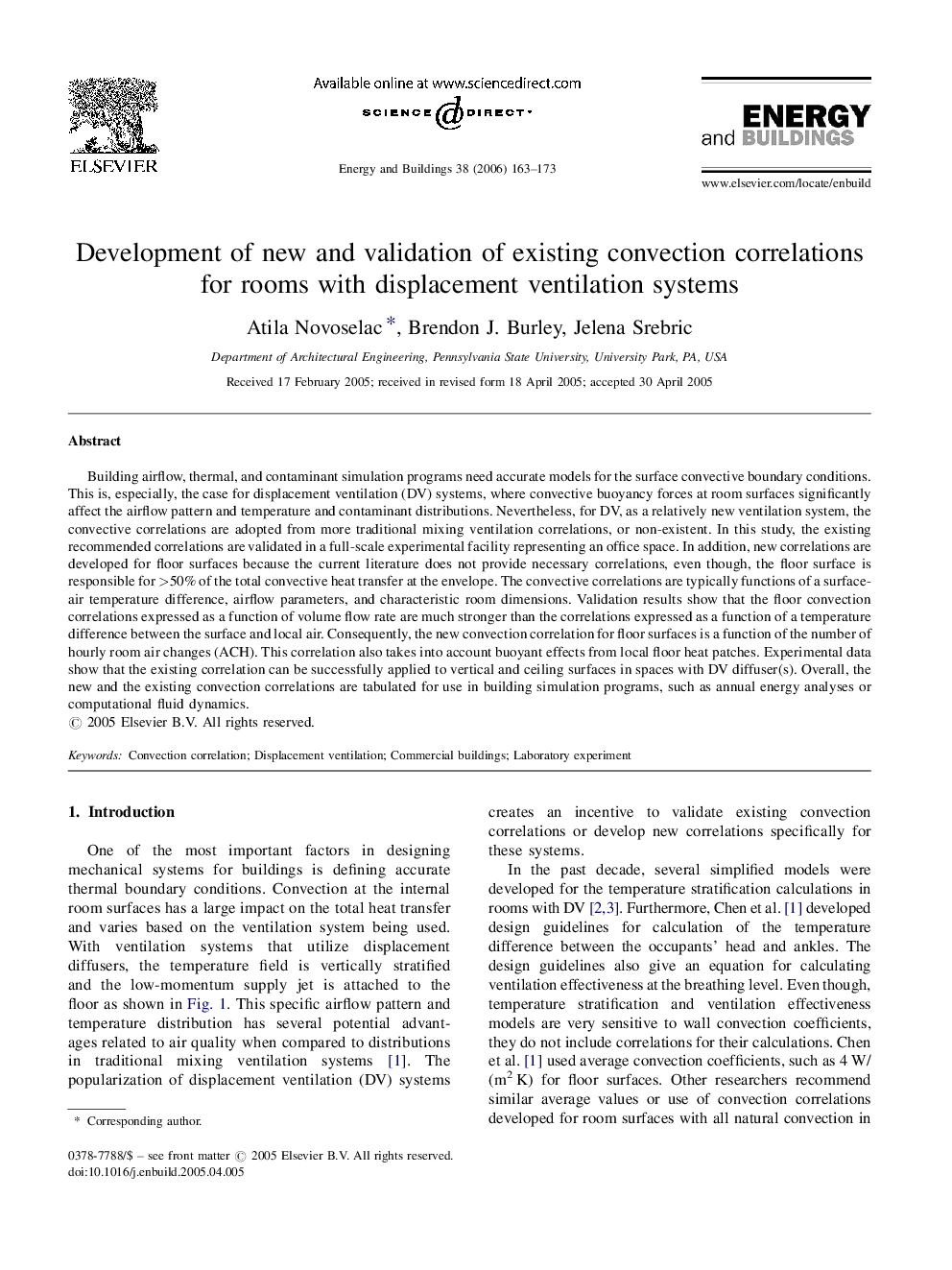| Article ID | Journal | Published Year | Pages | File Type |
|---|---|---|---|---|
| 265564 | Energy and Buildings | 2006 | 11 Pages |
Building airflow, thermal, and contaminant simulation programs need accurate models for the surface convective boundary conditions. This is, especially, the case for displacement ventilation (DV) systems, where convective buoyancy forces at room surfaces significantly affect the airflow pattern and temperature and contaminant distributions. Nevertheless, for DV, as a relatively new ventilation system, the convective correlations are adopted from more traditional mixing ventilation correlations, or non-existent. In this study, the existing recommended correlations are validated in a full-scale experimental facility representing an office space. In addition, new correlations are developed for floor surfaces because the current literature does not provide necessary correlations, even though, the floor surface is responsible for >50% of the total convective heat transfer at the envelope. The convective correlations are typically functions of a surface-air temperature difference, airflow parameters, and characteristic room dimensions. Validation results show that the floor convection correlations expressed as a function of volume flow rate are much stronger than the correlations expressed as a function of a temperature difference between the surface and local air. Consequently, the new convection correlation for floor surfaces is a function of the number of hourly room air changes (ACH). This correlation also takes into account buoyant effects from local floor heat patches. Experimental data show that the existing correlation can be successfully applied to vertical and ceiling surfaces in spaces with DV diffuser(s). Overall, the new and the existing convection correlations are tabulated for use in building simulation programs, such as annual energy analyses or computational fluid dynamics.
